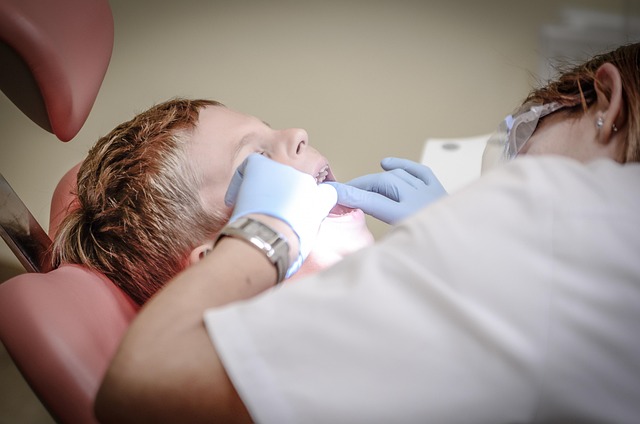Are Screwless Dental Implants the Future of Tooth Replacement in Your Country?
The world of dental implants is evolving — and screwless technology may become the next big step forward. Offering more comfort, better aesthetics, and fewer complications than traditional screw-retained systems, these implants are transforming what patients expect from restorative dentistry. But what makes them different, and are they the right choice for you?

The landscape of dental implant technology is evolving rapidly, with screwless systems emerging as a potential game-changer in restorative dentistry. While traditional dental implants have served patients well for decades, the introduction of screwless alternatives has sparked considerable interest among both dental professionals and patients seeking tooth replacement solutions.
What Are Screwless Dental Implants — and How Do They Work?
Screwless dental implants utilize innovative attachment mechanisms that differ fundamentally from conventional threaded implants. Instead of relying on a screw-like design that threads into the jawbone, these systems often employ friction-fit connections, magnetic attachments, or specialized locking mechanisms. The implant body is typically inserted into a precisely prepared socket in the jawbone, where it achieves stability through mechanical retention and biological integration. Some screwless systems use a press-fit approach, where the implant is carefully sized to create a tight fit within the bone socket, while others incorporate unique surface textures or coatings that promote rapid osseointegration without requiring threaded engagement.
How Is the Procedure Different From Traditional Implants?
The surgical procedure for screwless implants often involves less bone preparation compared to traditional methods. Rather than creating threaded channels in the jawbone, dental surgeons typically prepare smooth-walled sockets that accommodate the specific geometry of the screwless implant. This can result in reduced drilling time and potentially less trauma to surrounding bone tissue. The insertion process may be more straightforward, as it eliminates the need for precise torque control required when threading conventional implants. Additionally, some screwless systems allow for immediate loading, meaning temporary or permanent crowns can be attached during the same appointment, reducing the overall treatment timeline.
What Advantages Do Screwless Implants Offer?
Screwless dental implants present several potential benefits over traditional systems. The reduced surgical trauma associated with their placement may lead to decreased post-operative discomfort and faster initial healing. The elimination of threading can preserve more of the natural bone structure, which may be particularly beneficial in cases where bone density is a concern. Some patients report less sensitivity to temperature changes and reduced risk of screw loosening, a complication that occasionally affects traditional implants. The simplified insertion process may also reduce chair time and make the procedure more comfortable for anxious patients.
Who Is the Best Candidate for Screwless Implants?
Ideal candidates for screwless implants typically have adequate bone density and volume to support the alternative retention mechanisms. Patients with good oral hygiene habits and realistic expectations about the treatment process tend to achieve optimal outcomes. Those who have experienced complications with traditional implants, such as screw loosening or sensitivity issues, may find screwless alternatives particularly appealing. However, certain anatomical considerations, such as bone quality and the specific location of the missing tooth, may influence candidacy. A thorough evaluation by a qualified dental professional is essential to determine suitability for this treatment approach.
How Much Do Screwless Dental Implants Cost in Your Region?
The cost of screwless dental implants varies significantly based on the specific system used, the complexity of the case, and the geographical location of the practice. In Ireland, patients can expect to invest between €2,500 and €4,500 per implant, including the crown restoration. This pricing range reflects the newer technology and specialized training required for these systems.
| Treatment Option | Provider Type | Cost Estimation |
|---|---|---|
| Single Screwless Implant | Private Practice | €2,500 - €3,500 |
| Multiple Implants | Specialist Clinic | €2,200 - €3,200 per unit |
| Full Arch Restoration | Implant Center | €15,000 - €25,000 |
| Consultation & Planning | Various Providers | €150 - €300 |
Prices, rates, or cost estimates mentioned in this article are based on the latest available information but may change over time. Independent research is advised before making financial decisions.
The Future Outlook
While screwless dental implants show promise, their long-term success rates and durability compared to traditional implants are still being evaluated through ongoing clinical studies. The technology continues to evolve, with manufacturers refining designs and techniques based on early clinical experiences. As more data becomes available and dental professionals gain experience with these systems, screwless implants may indeed play a significant role in the future of tooth replacement. However, traditional implants remain the gold standard due to their extensive research backing and proven long-term success rates. Patients considering tooth replacement options should discuss both traditional and screwless alternatives with their dental provider to determine the most appropriate solution for their individual circumstances.
This article is for informational purposes only and should not be considered medical advice. Please consult a qualified healthcare professional for personalized guidance and treatment.




